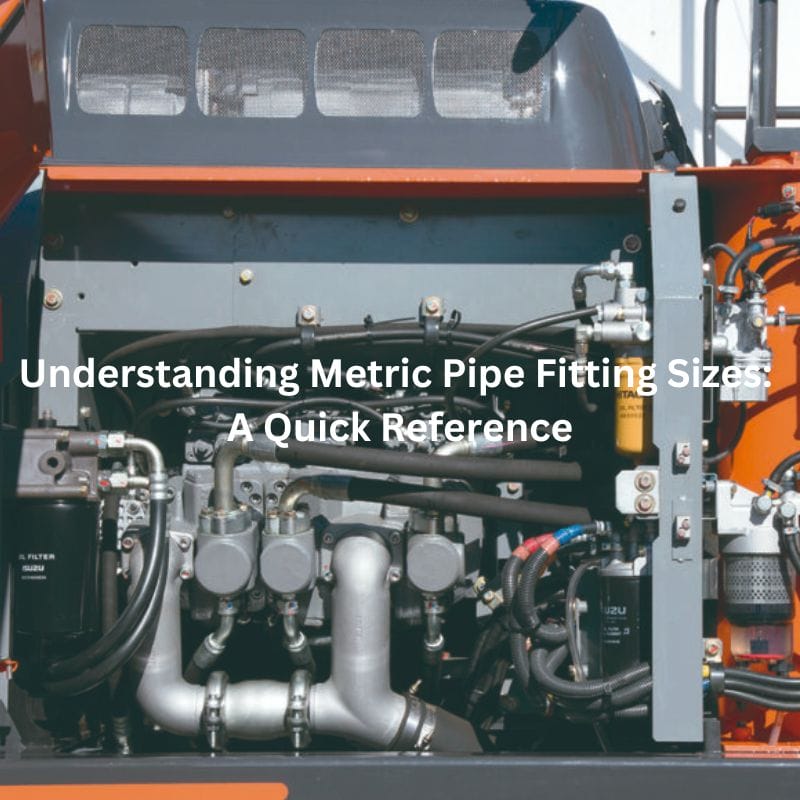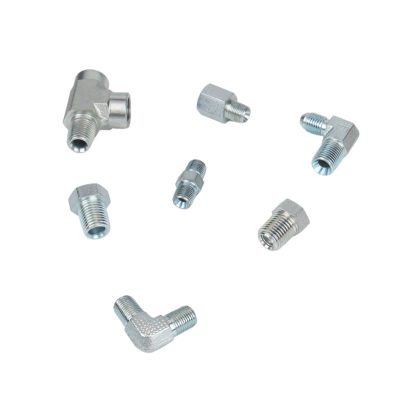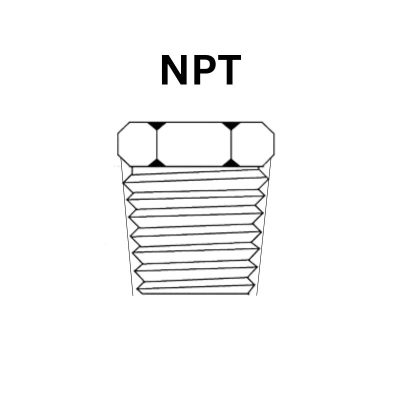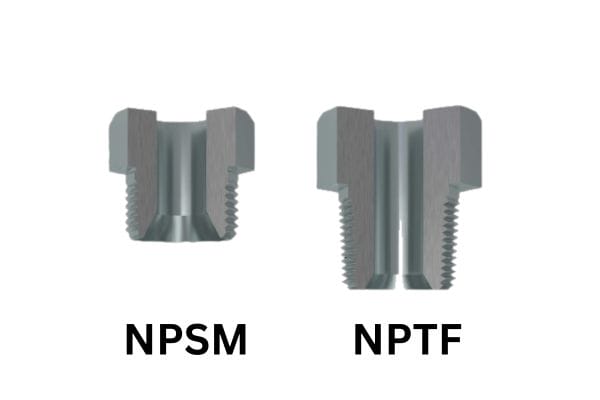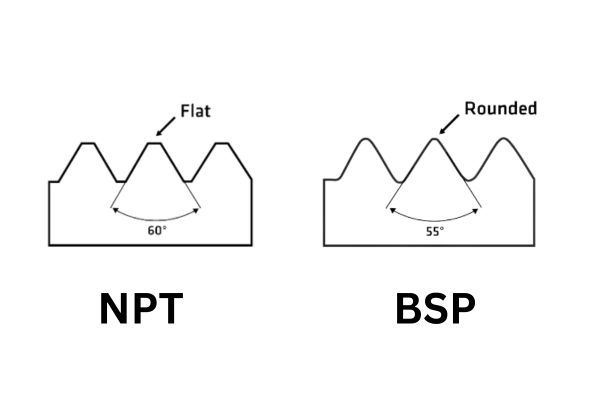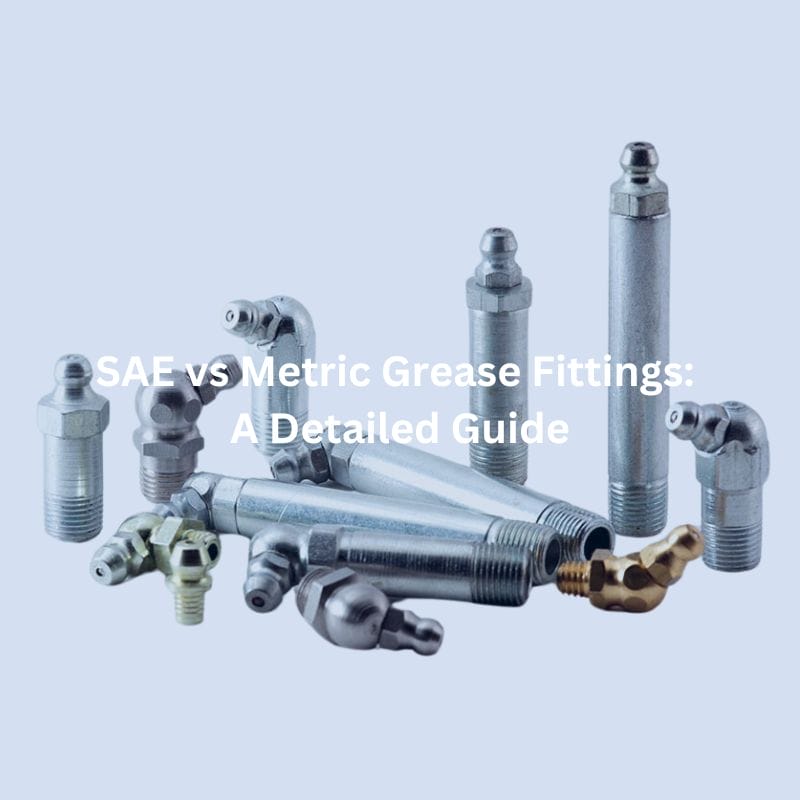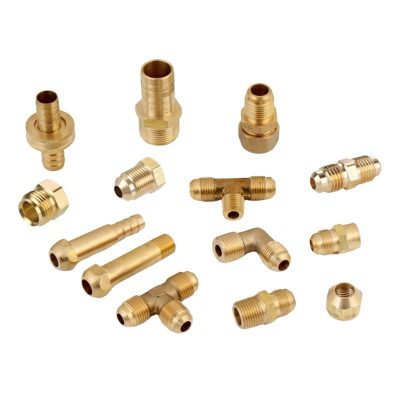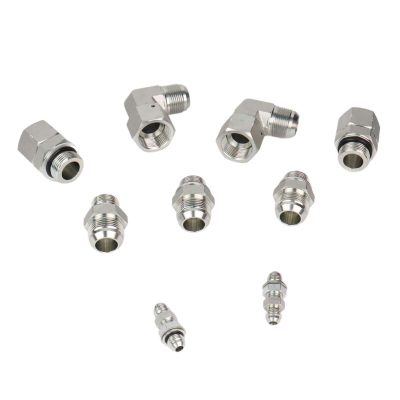Understanding Metric Pipe Fitting Sizes: A Quick Reference
Introduction
Metric pipe fitting sizes are a standardized system used globally in various industries, such as plumbing, automotive, and manufacturing, for connecting pipes and tubes. These fittings are essential for ensuring compatibility and efficiency in systems that rely on precise fluid or gas flow. The history of metric pipe fittings dates back to the push for international standardization, which aimed to simplify global trade and manufacturing processes. This guide is designed to help you understand metric pipe fitting sizes, offering a quick and easy reference for accurate and reliable installations.
Basics of Metric Pipe Fitting Sizes
Metric pipe fittings are components used to connect sections of pipe or tubing in systems that require the precise conveyance of fluids or gases. These fittings are measured using the metric system, which is based on meters and millimeters. This standardization allows for consistent and accurate sizing, ensuring that parts from different manufacturers can fit together seamlessly.
Common Materials Used
Metric pipe fittings are manufactured from a variety of materials, each chosen for its specific properties and suitability for different applications. Common materials include:
Brass: Known for its durability and resistance to corrosion, brass is often used in plumbing and heating applications.
Stainless Steel: Valued for its strength and resistance to rust and corrosion, stainless steel fittings are ideal for high-pressure and high-temperature environments.
Plastic: Lightweight and resistant to chemical corrosion, plastic fittings are commonly used in residential plumbing and irrigation systems.
Why Metric?
Using metric fittings offers several advantages compared to imperial fittings. One key advantage is the ease of measurement and calculation. The metric system is based on units of ten, which simplifies conversions and reduces the likelihood of errors during design, manufacturing, and installation. Additionally, metric fittings often provide more precise measurements, which is critical in applications requiring high accuracy.
Global Standardization and Its Benefits
Global standardization through the metric system offers significant benefits, particularly in international trade and manufacturing. With metric fittings, companies can source components from around the world without worrying about compatibility issues, as the sizes are universally recognized. This standardization facilitates smoother supply chains, reduces inventory complexity, and ensures that products meet international quality standards.
Understanding Measurements
How Metric Pipe Fittings Are Measured
Metric pipe fittings are measured using the metric system, typically in millimeters (mm). The key dimensions measured include the outer diameter (OD) and the inner diameter (ID) of the pipe, as well as the thread size if applicable. These measurements are critical for ensuring a proper fit and reliable performance in the assembled system.
Diameter: The diameter of a pipe fitting is one of its most crucial measurements. The outer diameter (OD) is the measurement across the widest point of the fitting, while the inner diameter (ID) is the measurement of the open space inside the fitting. These measurements ensure that the pipe and fitting will fit together properly.
Thread Size: For threaded fittings, the thread size is another essential measurement. This includes the pitch (the distance between threads), the thread angle, and the major diameter (the outer edge of the threads). Accurate thread measurements ensure a secure and leak-free connection.
Other Measurements: Additional measurements that may be important depending on the application include the wall thickness of the pipe (which affects its strength and flow capacity) and the overall length of the fitting. These measurements help in designing systems that are both efficient and durable.

Types of Metric Pipe Fittings
Straight Fittings
Straight fittings, also known as straight connectors or couplings, are used to connect two sections of pipe or tubing in a straight line. They provide a secure and leak-proof connection, ensuring the continuous flow of fluids or gases without any change in direction. These fittings are commonly used in plumbing, hydraulic, and pneumatic systems, as well as in various industrial applications where a direct, uninterrupted pipeline is required.
Common Sizes and Variations
Straight fittings come in a variety of sizes to match the outer diameter (OD) of the pipes they are connecting. Common sizes include 6 mm, 8 mm, 10 mm, 12 mm, 16 mm, and 20 mm. Variations include different thread types (e.g., BSP, NPT) and configurations, such as male-to-male, female-to-female, and male-to-female connectors.
Elbow Fittings
Elbow fittings are used to change the direction of a pipeline, typically by 90 degrees or 45 degrees. These fittings are essential in systems where the pipes need to navigate around obstacles or fit into confined spaces. Elbow fittings are widely used in plumbing, heating, and cooling systems, as well as in industrial piping networks.
Common Sizes and Variations
Common sizes for elbow fittings include 10 mm, 15 mm, 20 mm, 25 mm, and 32 mm. Variations include different angles (e.g., 45-degree, 90-degree), as well as short-radius and long-radius elbows. Additionally, elbows can be threaded or socket-welded, depending on the application and required connection type.
Tee Fittings
Tee fittings, also known as T-fittings, are used to connect three sections of pipe or tubing, forming a T-shaped intersection. These fittings allow for the branching off of a pipeline into two separate directions, making them ideal for distributing fluids or gases to multiple locations. Tee fittings are commonly found in plumbing, irrigation, and HVAC systems.
Common Sizes and Variations
Standard sizes for tee fittings include 10 mm, 15 mm, 20 mm, 25 mm, and 32 mm. Variations include equal tees (where all three branches are the same size) and reducing tees (where one or more branches are of different sizes). Tees can also have threaded or socket-welded connections.
Reducer Fittings
Reducer fittings are used to connect pipes of different diameters, allowing for a smooth transition between larger and smaller pipes. These fittings are essential in systems where the flow rate or pressure needs to be adjusted by changing the pipe size. Reducers are commonly used in plumbing, HVAC, and industrial piping systems.
Common Sizes and Variations
Common sizes for reducer fittings include combinations such as 20 mm to 15 mm, 25 mm to 20 mm, and 32 mm to 25 mm. Variations include concentric reducers (which have a symmetrical shape) and eccentric reducers (which have an offset shape to prevent air pockets in horizontal pipelines). Reducers can also be threaded or socket-welded.
Coupling Fittings
Coupling fittings, also known as couplers, are short lengths of pipe used to connect two pipes together. They provide a secure and leak-proof connection, making them ideal for extending the length of a pipeline or repairing a damaged section. Couplings are widely used in plumbing, hydraulic, and pneumatic systems.
Common Sizes and Variations
Standard sizes for couplings include 6 mm, 8 mm, 10 mm, 12 mm, 16 mm, and 20 mm. Variations include full couplings (which join two pipes of the same size) and reducing couplings (which join pipes of different sizes). Couplings can also have threaded or socket-welded connections.
Other Specialized Fittings
Specialized fittings are designed for specific applications and may not be as widely used as standard fittings. These include fittings like crosses, unions, caps, plugs, and flanges:
Crosses: Used to connect four sections of pipe in a cross-shaped intersection. Commonly used in fire sprinkler systems and certain industrial applications.
Unions: Allow for easy disconnection and reconnection of pipes, useful in systems that require regular maintenance or assembly.
Caps and Plugs: Used to close off the ends of pipes, preventing the flow of fluids or gases. Essential for system shutdowns or future expansions.
Flanges: Provide a method for connecting pipes, valves, and other equipment with bolts, allowing for easy assembly and disassembly. Commonly used in high-pressure applications.
Selecting the Right Metric Pipe Fitting Size
Pressure Ratings
Definition: Pressure rating indicates the maximum pressure that a fitting can withstand without failing.
Importance: Ensuring that fittings match the pressure requirements of your system is critical for safety and performance.
Selection Tips: Check the specifications provided by the manufacturer. Always select fittings with a pressure rating equal to or higher than the system’s maximum pressure.
Temperature Ratings
Definition: Temperature rating specifies the range of temperatures that a fitting can endure without degrading.
Importance: Using fittings outside their temperature range can lead to failures such as leaks, material degradation, and system inefficiency.
Selection Tips: Consider the operating temperature of your system and select fittings designed to perform well within that range. For extreme temperatures, specialized fittings may be necessary.
Material Compatibility
Definition: Material compatibility ensures that the fitting material is suitable for the type of fluid or gas being conveyed.
Importance: Incompatible materials can cause corrosion, leaks, and system failures.
Selection Tips: Match the fitting material with the fluid or gas type. For example, stainless steel fittings are excellent for corrosive environments, while brass is suitable for water and air applications.
Metric Pipe Fitting Measurement Tips
Use Calipers for Precision
Digital Calipers: Provide highly accurate measurements of both the outer diameter (OD) and inner diameter (ID) of the pipe fittings. Ensure the calipers are zeroed before use.
Vernier Calipers: Also accurate, but require careful reading. Make sure to calibrate them periodically for consistent accuracy.
Thread Gauges for Threaded Fittings
Thread Pitch Gauges: Used to measure the thread pitch (the distance between threads). Select the gauge that fits snugly into the threads without forcing it.
Thread Diameter Gauges: Measure the major and minor diameters of the threads to ensure compatibility with mating parts.
Measuring Tape for Length
Flexible Measuring Tape: Ideal for measuring the overall length of pipes and fittings, especially when dealing with curved or irregular shapes.

Proper Measurement Points
Outer Diameter (OD): Measure across the widest point of the fitting. Ensure the caliper is perpendicular to the fitting to avoid inaccurate readings.
Inner Diameter (ID): Measure the open space inside the fitting. Ensure the caliper tips touch the inner walls without deforming the fitting.
Thread Size: Measure both the major and minor diameters of the thread. For male threads, measure the outermost points, and for female threads, measure the innermost points.
Practical Tips for Accurate Measurement
Ensure Cleanliness
Clean Fittings: Before measuring, clean the fittings thoroughly to remove any debris, oil, or dirt that could affect the measurement.
Dry Surfaces: Make sure the surfaces are dry to prevent slippage of measuring tools.
Avoid Deformation
Gentle Handling: Handle fittings gently to avoid deforming them during measurement. Deformation can lead to inaccurate readings.
Correct Tool Pressure: Apply consistent, gentle pressure when using calipers to avoid compressing the material.
Measure Multiple Times
Consistency Check: Measure each fitting multiple times to ensure consistency. Record each measurement and take the average to account for any minor discrepancies.
Different Angles: Measure from different angles to confirm uniformity, especially with threaded fittings.
Account for Tolerances
Manufacturer Specifications: Refer to manufacturer specifications for acceptable tolerances. Metric fittings are manufactured within certain tolerance ranges to ensure compatibility.
Fit and Function: Ensure that the measured dimensions fall within these tolerances to guarantee proper fit and function.
Use Appropriate Tools
Calibrated Instruments: Ensure all measuring instruments are calibrated regularly to maintain their accuracy.
Specialized Tools: Use specialized tools like micrometers for high-precision measurements if needed.
Tips for Ensuring a Proper Fit
Match the Sizes
Correct Diameter: Ensure the outer diameter of the pipe matches the inner diameter of the fitting for a snug fit.
Thread Compatibility: Verify that the thread pitch and diameter match between the fitting and the pipe.
Use Sealing Materials
Teflon Tape: Wrap Teflon tape around male threads to ensure a tight seal and prevent leaks.
Pipe Dope: Apply pipe dope (thread sealant) on threads to enhance sealing, especially in high-pressure applications.
Check for Alignment
Proper Alignment: Ensure that the pipes and fittings are properly aligned to avoid stress and potential leaks at the joints.
Support Systems: Use supports and brackets to maintain alignment and prevent sagging or misalignment over time.
Avoid Over-tightening
Tightening Technique: Tighten fittings until they are snug, then apply an additional quarter turn. Over-tightening can strip threads and cause leaks.
Regular Inspection and Maintenance
Routine Checks: Regularly inspect fittings for signs of wear, corrosion, or leaks.
Timely Replacement: Replace any worn or damaged fittings promptly to maintain system integrity.
Conclusion
In summary, understanding metric pipe fitting sizes involves knowing how to measure accurately, considering factors like pressure, temperature, and material compatibility, and using the correct tools and techniques for a secure installation. By following these guidelines, you can ensure efficient and reliable piping systems. For further reading and additional resources, refer to industry standards and guides. If you need expert advice or support, please contact us!
FAQ
What are metric pipe fittings?
Metric pipe fittings are components used to connect pipes or tubes in hydraulic, plumbing, and various other systems, measured using the metric system.
Why should I use metric fittings over imperial fittings?
Metric fittings provide easier and more precise measurements, facilitating global standardization and compatibility across different manufacturers.
How do I measure the size of a metric pipe fitting?
Use calipers to measure the outer diameter (OD) and inner diameter (ID), and thread gauges to determine thread size and pitch.
What materials are common for metric pipe fittings?
Common materials include brass, stainless steel, and plastic, each selected based on their properties and suitability for specific applications.
How do I ensure a proper fit for metric pipe fittings?
Ensure cleanliness, use appropriate sealing materials like Teflon tape, and avoid over-tightening. Align pipes correctly and check for consistency in measurements.
Where can I find more information or support for selecting metric pipe fittings?
Refer to industry standards, and manufacturer’s guides, or contact expert support for personalized advice and further resources.

